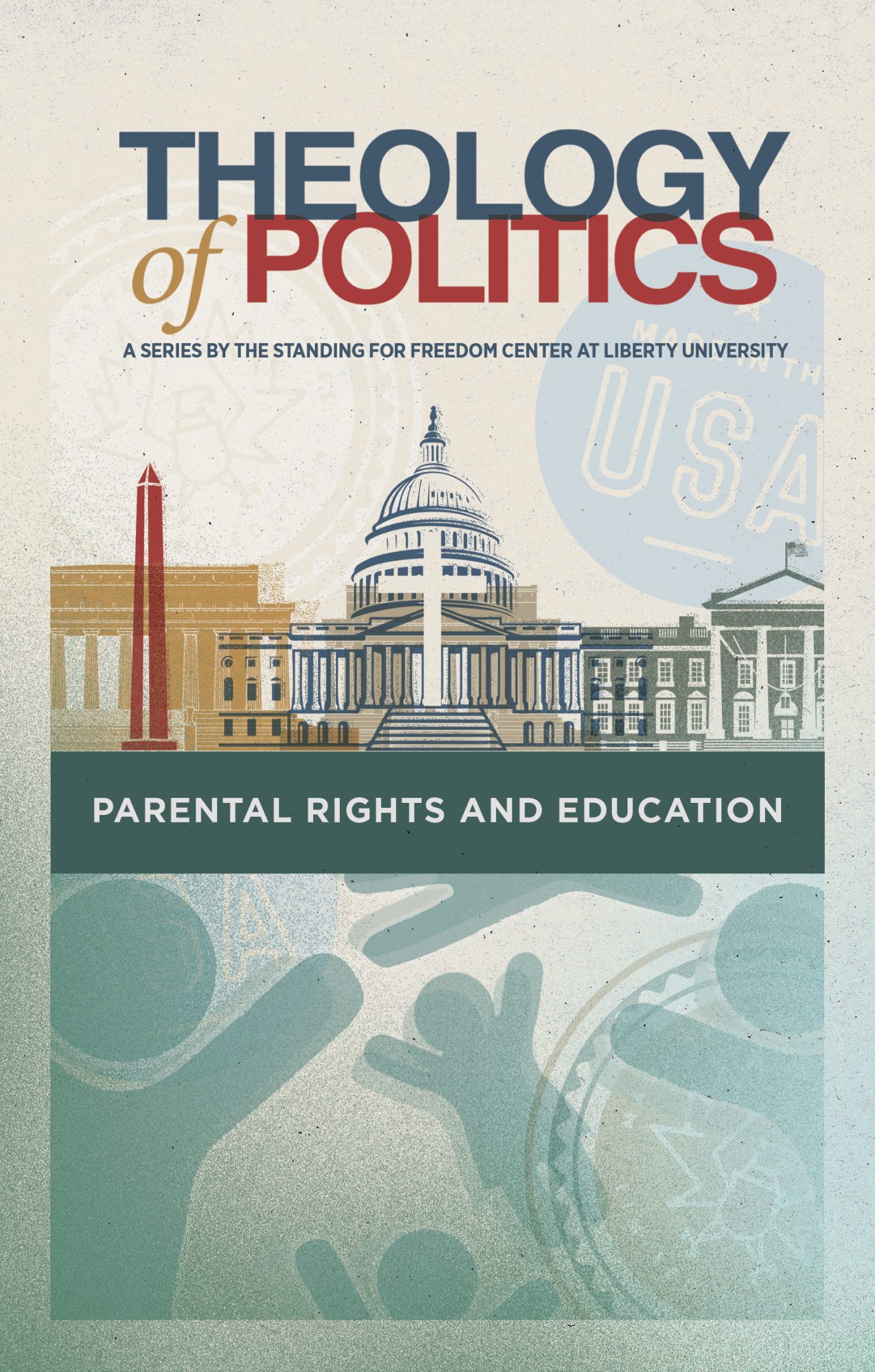


Get a free copy of Parental Rights & Education when you subscribe to our newsletter!

The plan to dismantle the U.S. Department of Education will restore parental rights, enable tailored curricula, increase choice, and allow teachers and staff to focus on academics rather than regulatory and ideological compliance.
For over four decades, the U.S. Department of Education has been the federal government’s instrument for consolidating power over America’s classrooms. Established in 1979 under President Jimmy Carter, it was introduced as a solution to streamline federal education programs and promote equity.
Ironically, when the idea to create the new department was first proposed, the Washington Post editorial board predicted that the department’s clientele would not “necessarily be the schoolchildren and their parents affected by the federal government’s education programs. Much more probably it would be the National Education Association, the organization of teachers and school administrators who already exert a great deal of influence on education policy in Washington. In a way, this would be giving them their own department.”
And that’s exactly what happened. Today, this sprawling bureaucracy centralizes policy-making in Washington, imposes ideological mandates, caters to powerful left-wing unions and activists, and alienates parents and communities. How sprawling is it? In 2024, it had a budget of $79.1 billion in discretionary spending and 4,400 employees.
In a direct challenge to this federal overreach, President-elect Donald Trump wants to completely dismantle the U.S. Department of Education. More than a policy reform, it is a call to return education to its rightful stewards: parents, local communities, and states.
By decentralizing control, reducing bureaucratic waste, and aligning education with traditional American values, Trump’s vision offers a transformative path forward.
But can this bold plan succeed? And what will it mean for the future of American education?
From its inception, the Department of Education faced criticism over its constitutionality and effectiveness. Conservatives argue that education is a responsibility reserved for states under the 10th Amendment, and federal involvement undermines this principle.
Neal McCluskey, director of the Cato Institute’s Center for Educational Freedom, describes the department as “a failure both constitutionally and pragmatically. It centralizes power that belongs to states and has not delivered measurable improvements in educational outcomes.”
Despite spending over $800 billion annually on K-12 education, American students rank well below their international peers in math and reading. According to the Organization for Economic Co-operation and Development (OECD), the U.S. is outperformed by nations that spend significantly less but focus on localized education systems. The Department of Education’s legacy includes persistent achievement gaps and declining literacy rates, despite its specialized programs designed to address these issues.
Recently, the department has become a vehicle for promoting controversial policies. Title IX regulations, intended initially to ensure gender equity, have been expanded to enforce mandates on gender identity, forcing schools to allow biological males into girls’ bathrooms, on sports teams, and in overnight accommodations. Similarly, Critical Race Theory (CRT) has been introduced into curricula, fostering division and teaching children to view society through a lens of victimhood and oppression.
Federal dollars come with federal strings, and schools that resist these policies often face the threat of losing critical funding. This dynamic has led to what many conservatives see as a betrayal of educational principles, replacing foundational skills and knowledge with progressive ideology.
Those strings extend even beyond funding. Many school officials feel beholden to their national overseers rather than to their students, and as a result, concerned parents who have spoken up and objected to toxic ideologies in the classroom have been smeared, threatened, spied on, arrested, and investigated as domestic terrorists.
This is the end game of placing control over children’s education in the hands of a massive, centralized, power-hungry bureaucracy.
Central to Trump’s plan is the belief that education is best managed by those closest to the students: parents, communities, and states. The cultural, economic, and demographical diversity of America’s regions makes a one-size-fits-all approach impractical and ineffective.
Here are the key benefits of local control:
1. Tailored Curricula: States could design programs that reflect their unique history, culture, demographics, and workforce needs. For example, states with strong agricultural economies could emphasize vocational training, while urban centers might prioritize STEM education.
2. Innovative Approaches: Without federal mandates, states could experiment with new teaching methods and technologies, turning them into laboratories of reform. Finland and Switzerland, two countries that outperform the U.S. in global rankings, have achieved success through decentralized education systems.
3. Parental Involvement: Local control fosters stronger connections between parents and schools. When decisions are made close to home, families are more likely to engage, ensuring that education reflects community values and priorities.
Local control has worked before. In fact, for much of America’s history, education was managed by states and localities, with outcomes surpassing those achieved under federal oversight. Trump’s plan seeks to restore this proven model, empowering communities to craft solutions that meet their unique needs.
As noted previously, critics have long argued that the Department of Education’s massive budget bureaucracy does more to sustain itself and special interests than it does to improve student outcomes.
The American Action Forum estimates that federal education regulations cost states and districts $2.7 billion annually, and administrative overhead consumes a significant portion of the department’s budget.
Eliminating these burdens would allow schools to focus on education rather than compliance. States could reallocate billions to teachers, technology, and infrastructure by eliminating redundant positions and programs.
Thus, Trump’s plan to eliminate the Department of Education would redirect these resources, and the focus of local school officials, to classrooms and students — where they matter most.
School choice is a cornerstone of Trump’s education policy, reflecting a belief that parents — not bureaucrats — should decide what’s best for their children. This approach has widespread support, with a 2023 Real Clear Opinion Research poll finding that 71 percent of Americans, including 73 percent of black Americans, favor school choice.
Here’s how school choice works:
1. Funding Students, Not Systems: Trump’s plan directs education dollars to families, ensuring parents can choose the best option for their children, whether public, private, charter, or homeschooling.
2. Competition Among Schools: School choice creates incentives for schools to improve. A Stanford University study found that urban charter school students gained 40 additional days of learning in math and 28 in reading compared to their peers in traditional public schools.
3. Equity and Opportunity: Low-income families would have access to the same educational opportunities as wealthier families, breaking cycles of poverty and underachievement.
Trump’s proposal aims to restore trust in American education by aligning it with traditional values. This includes fostering national unity, promoting civic pride, and ensuring that schools teach skills and knowledge rather than ideology.
Trump has also championed the idea of teaching American history in a balanced way, highlighting both achievements and challenges. Proponents argue that this approach fosters a sense of identity and pride, preparing students to be informed and engaged citizens.
A Parents Defending Education survey found that 58 percent of parents believe they should have the primary say in their children’s education. Removing federal oversight would empower parents to work with local schools to ensure curricula reflect community standards.
Donald Trump’s proposal to dismantle the Department of Education is a bold but necessary response to decades of federal overreach. By restoring local control, reducing bureaucracy, empowering school choice, and realigning education with traditional values, this vision offers a pathway to a more effective and responsive system.
Eliminating the Department of Education will be no small task. Resistance to the idea by unions and education activists will be fierce, and it will require congressional approval.
It’s important to remember that for most of America’s history, there was no federal education department, and education thrived under state and local control.
Trump’s plan seeks to return to this proven model, addressing systemic failures and restoring accountability, and most importantly, reclaiming education for parents, communities, and states. It challenges the status quo and provides a roadmap for reform that prioritizes students over systems.
For those who believe education is too important to be left in the hands of federal bureaucrats, Trump’s vision represents a turning point — a chance to create an education system that works for all Americans.
Many K-12 schools now embrace the secular woke agenda and are hostile to Christian beliefs and parental rights. Fortunately, parents don’t have to settle for this. Liberty University Online Academy is a K-12 program designed to educate your children in the ways of the Lord while preparing them to stand firm in their faith when they graduate. Our flexible online curriculum ensures that your student is trained at your convenience and keeps YOU the ultimate educator of your children.
